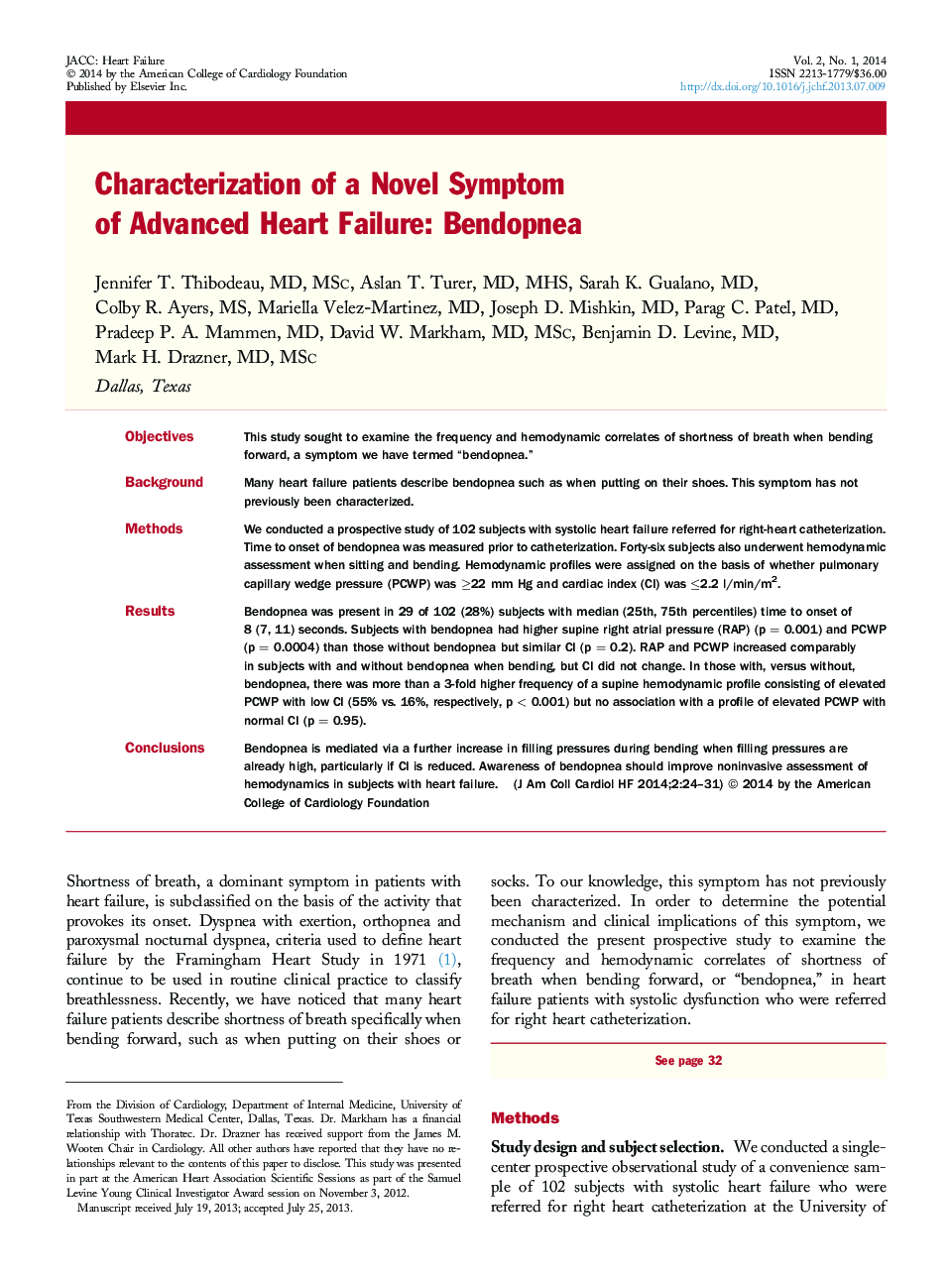| Article ID | Journal | Published Year | Pages | File Type |
|---|---|---|---|---|
| 2942520 | JACC: Heart Failure | 2014 | 8 Pages |
ObjectivesThis study sought to examine the frequency and hemodynamic correlates of shortness of breath when bending forward, a symptom we have termed “bendopnea.”BackgroundMany heart failure patients describe bendopnea such as when putting on their shoes. This symptom has not previously been characterized.MethodsWe conducted a prospective study of 102 subjects with systolic heart failure referred for right-heart catheterization. Time to onset of bendopnea was measured prior to catheterization. Forty-six subjects also underwent hemodynamic assessment when sitting and bending. Hemodynamic profiles were assigned on the basis of whether pulmonary capillary wedge pressure (PCWP) was ≥22 mm Hg and cardiac index (CI) was ≤2.2 l/min/m2.ResultsBendopnea was present in 29 of 102 (28%) subjects with median (25th, 75th percentiles) time to onset of 8 (7, 11) seconds. Subjects with bendopnea had higher supine right atrial pressure (RAP) (p = 0.001) and PCWP (p = 0.0004) than those without bendopnea but similar CI (p = 0.2). RAP and PCWP increased comparably in subjects with and without bendopnea when bending, but CI did not change. In those with, versus without, bendopnea, there was more than a 3-fold higher frequency of a supine hemodynamic profile consisting of elevated PCWP with low CI (55% vs. 16%, respectively, p < 0.001) but no association with a profile of elevated PCWP with normal CI (p = 0.95).ConclusionsBendopnea is mediated via a further increase in filling pressures during bending when filling pressures are already high, particularly if CI is reduced. Awareness of bendopnea should improve noninvasive assessment of hemodynamics in subjects with heart failure.
